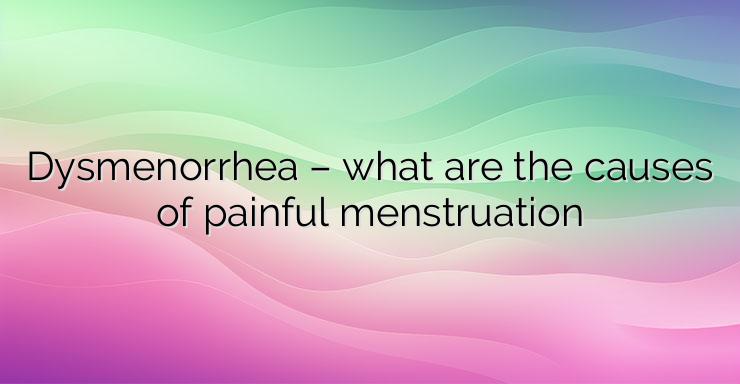Dysmenorrhea is a medical term that means painful menstruation. This is the most common pathology in women and it can appear at any age from the onset of the first menstruation – menarche to the onset of menopause. The pain syndrome varies in intensity, but very often it is so pronounced that it disrupts women’s daily activities. 1. What is dysmenorrhea? Painful menstruation is caused by uterine cramps that cause a dull ache in the lower abdomen and pelvis. They occur before or during menstruation and occur in about half of women of reproductive age. There is evidence that after pregnancy and childbirth pains during menstruation subside, but this, unfortunately, does not happen to everyone. Dysmenorrhea can be primary and secondary. It is primary when there is no gynecological disease. It appears at the beginning of the ovulatory cycles – when the ovaries become functionally active and begin to release a mature egg. This usually happens up to 12 months after the onset of menarche. Secondary dysmenorrhoea occurs as a result of a developing pathological process in the area of a woman’s internal genital organs. Such diseases are: endometriosis – functionally active endometrium spread outside the uterine cavity, adenomyosis – endometrial cells enter the muscle layer of the uterus, fibroid formations in the uterus, pelvic inflammatory disease, inserted intrauterine spirals. 2. What causes painful menstruation? Dysmenorrhea is caused by increased levels of prostaglandins released from the uterine mucosa, which cause uterine contractions and the appearance of a pain syndrome. Women with painful menses have higher levels of prostaglandins in their menstrual blood, especially high levels in the first days. NEWS_MORE_BOX Every month in a woman’s reproductive period, in the absence of a fertilized egg to implant in the uterine lining, a part of the endometrium – the functional layer – is shed in the form of menstrual bleeding. Uterine contractions during a cycle are thought to play a role in removing unnecessary cells from the lining of the uterus. Usually, menstrual pain starts before the onset of menses and then gradually disappears within 48 hours. The severity of dysmenorrhea is directly related to early onset of the first menstruation – menarche, increased body weight, stress, depression, alcohol and cigarette use. Diarrhea, headache, back pain, nausea or vomiting may occur during painful periods. 3. What is the treatment for dysmenorrhea? Most often, the therapy of this condition consists in the administration of medications that relieve the symptoms. For this purpose, various non-steroidal anti-inflammatory drugs are used, the effect of which is due to suppression of prostaglandin synthesis. Some women resort to taking acetylsalicylic acid (aspirin), which undoubtedly has a pain-relieving effect,but it is not advisable to take it shortly before or during menstruation, as it has anti-clotting properties and may cause heavy bleeding. Other medicinal products that are used to relieve pain during menstruation are oral contraceptives. Their action is expressed in suppression of ovulation. Often, women feel better using heating pads that they place on the lower abdomen. This leads to relaxation of the uterine musculature and partial relief of pain. Good rest and abdominal massage also have a beneficial effect on dysmenorrhea.


Leave a Reply